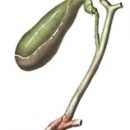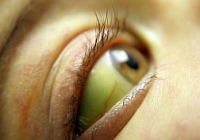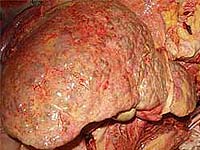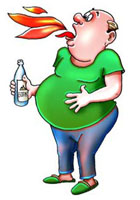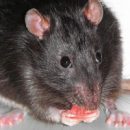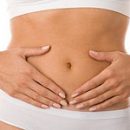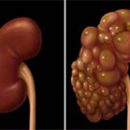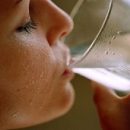With age, the liver and the biliary system undergoes significant changes that in most cases are a starting mechanism in the development of gallbladder diseases. RATIONAL POWER AND RIGHT FOOD MODE are good disease prevention.
Content
Treatment of chronic calculous cholecystitis
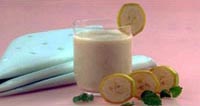 In the process of aging liver - the main biochemical «laboratory» The body - undergoes essential morphological and functional changes that contribute to the development of the disease of the gallbladder, especially in older and old people. The most common of them is chronic calculous cholecystitis.
In the process of aging liver - the main biochemical «laboratory» The body - undergoes essential morphological and functional changes that contribute to the development of the disease of the gallbladder, especially in older and old people. The most common of them is chronic calculous cholecystitis.
Treatment of chronic calculatory cholecystitis depend on the degree of activity of the process. In the inactive course of the disease, a complex of medical measures should include compliance with the right regime of labor and life, rational food, the use of drugs, sanatorium-resort treatment.
Mode of Labor and Life must exclude hard physical work, mental overvoltage. It is impossible to conduct a sedentary lifestyle; The regular classes in the morning gymnastics and therapeutic physical education, on the contrary, contribute to the strengthening of bile outflow, prevent its stagnation.
Balanced diet
Important in the treatment and prevention of chronic liver disease and gallbladder has rational nutrition. First of all, a clear mode is needed. We need to eat in the same hour 4-5 times a day. The body gets used to a certain mode; In the time established for meals, digestive glands begin to highlight juices, appetite appears, food is better absorbed. In addition, irregular, after large periods of time, the reception of food leads to the fact that part of the water is absorbed in the bustling bubble, as a result of which the bile becomes more concentrated. With a stitch of such bile, a precipitate falls out the basis for the formation of stones.
The number of food consumed must be limited. The energy costs of the organism of the elderly and old person are reduced, so high caloric content of nutrition does not correspond to the balance of biological processes in old age. Energy value of food in patients with chronic hepatitis and chronic calculose cholecystitis should be no more than 1800-2000 calories per day.
Restriction of the number of food should not affect its fullness. Insufficient nutrition consisting in violation of the balance in the ratio of the main ingredients of food, adversely affects the liver functions. The patient diet must contain food rich in protein (1.2-1.5 g of protein per 1 kg of weight per day), and preference should be given to full proteins, counteracting fat deposition in the liver. These proteins include cottage cheese, skinny veal, egg protein, various cereals (buckwheat, oat and t.D.). Also it is also allowed to use low-fat boiled meat, meatballs, chopped meat, baked meat pudding, skinny varieties of freshwater fish (pike perch, perch, mirror carp). It is absolutely necessary that at least half of the proteins of the food diet constitute the proteins of animal origin, of which the protein of the tissues, blood, enzymes is synthesized in the liver).
The amount of carbohydrates in food must be somewhat limited (2-4 g per 1 kg of body weight per day) Since their excess is converted into fat, and then postponed in the liver, relaxing its function. Preference should be given to such products like honey, sweet juices, jam.
The total amount of fat in the diet should not exceed 1 g per 1 kg of weight per day. It is better to use vegetable fats containing unsaturated fatty acids that activate lipolytic enzymes involved in the regulation of fat metabolism and preventing obesity of the liver. In addition, vegetable oils act choleretically. It is not recommended to use products rich in cholesterol: internal organs of animals, brains, hard-based fats. Sealing seasonings, sauces, fatty and fried dishes, meat and fish, canned food, smoked. Alcohol consumption is strictly prohibited.
Chronic cholecystitis are often accompanied by constipation, to eliminate which the fruits and vegetables should be used. Weekly unloading days are very useful: dairy - 1 l of milk (150 ml 6 times a day) with a cracker; cottage cheese - 300 g of cottage cheese and 800 g kefir; Apple - 1.5-2 kg of dead apples; Fruit and berry days (for season) - strawberry (1.5 kg), watermelon, grape (1 kg without peel and without bones). It should be noted that patients with chronic liver diseases must constantly comply with the above-described mode and nutrition. We must strive for the daily variety of product set.
An effective method of treating chronic liver diseases and biliary tract is the use of mineral waters that reduce bile stars that contribute to a decrease in inflammatory processes. Water must be selected individually, given its composition and state of gastric secretion. At increased acidity, preference should be given preference to hydrocarbonate-sodium waters (1-2 hours before meals), with reduced acidity, it is better to use carbon dioxide hydrocarbonate-sulphate-calcium (type of narzan) and chloride-sodium water 20-30 minutes before meals. Water should be taken in heated form (30-36°C) 1 cup 3 times a day for 3-4 weeks. The course of treatment is repeated 2-3 times a year.
Very favorably affects the health of patients with chronic liver disease and gallbladder Sanatorium-resort treatment.
Cholecystitis Prevention
The progression of chronic hepatitis and chronic cholecystitis largely depends on the observance of preventive measures. They are primarily in the elimination of various foci of infection (Botkin's disease, tonsillitis, sneaming, frontitles, caries teeth, ovarian inflammation, etc.), which under certain conditions can become a source of infection of the biliary tract. Systematic implementation of prevention measures will allow older people to preserve well-being and health care for many years of life, prevent the emergence of recurrence of the disease. Calculose cholecystitis in people of older age groups is often complicated by the blockage of bubble duct, which may cause the water bubble water and its suppuration. The stones of the bile duct can be the cause of obtaceous (stagnant) jaundice. Repeated outbreaks of the inflammatory process sometimes ends with a gangwall bubble with the development of peritonitis. It is important to remember that even with such heavy states of manifestation of the disease in the elderly and old people, it is odon that significantly complicates their diagnosis. Localization and irradiation of pain are atypical, their intensity is relatively small; Temperature reaction and blood changes may not match the severity of complications.

